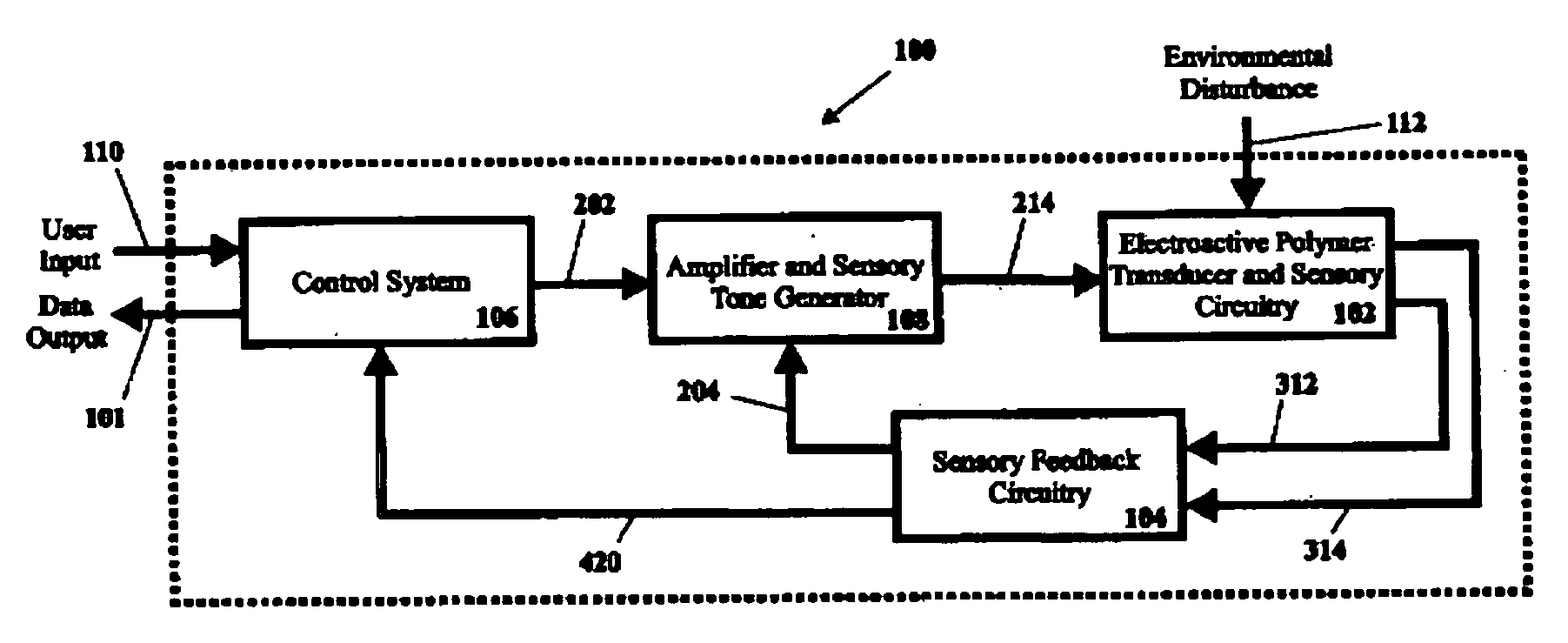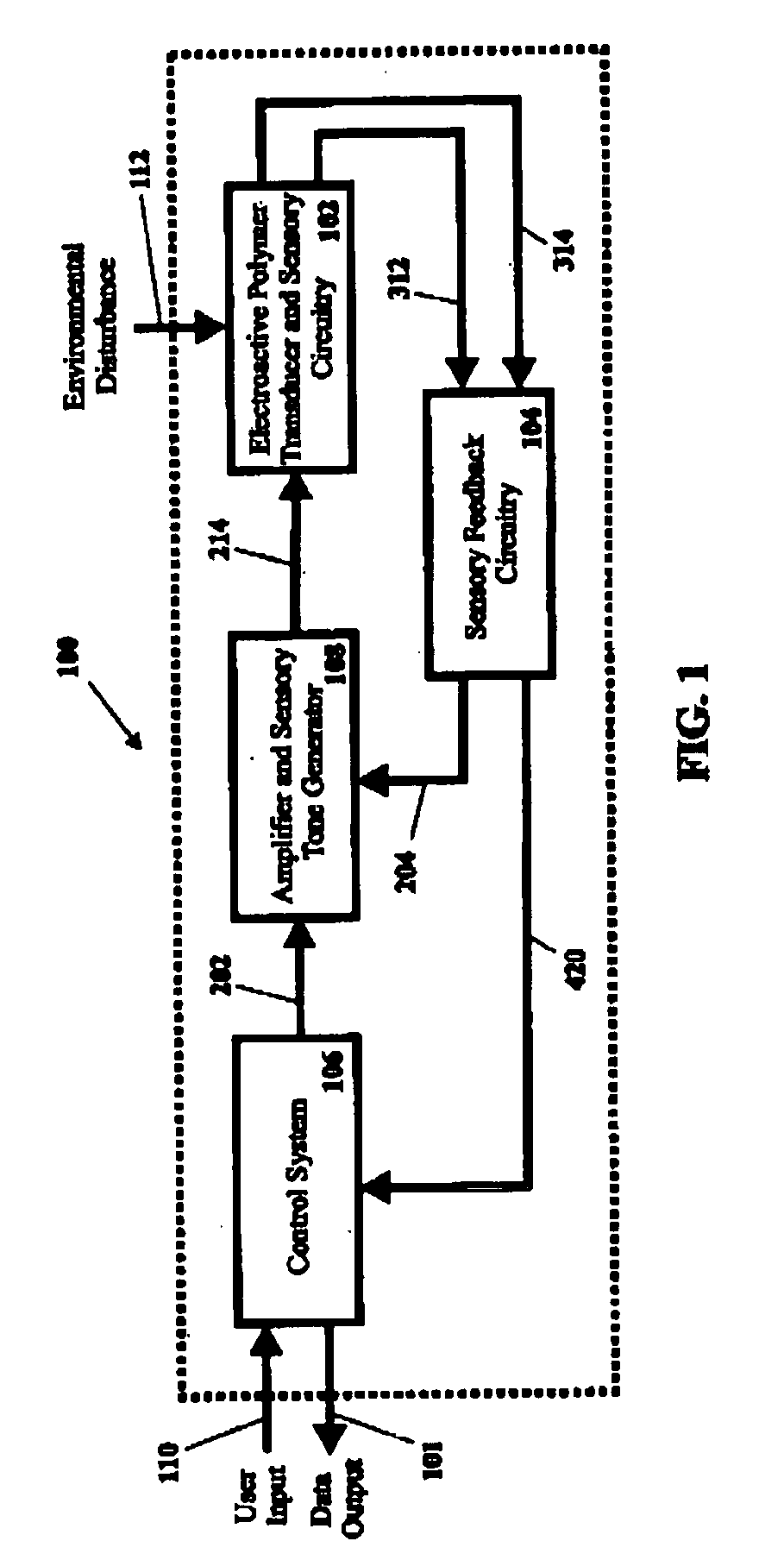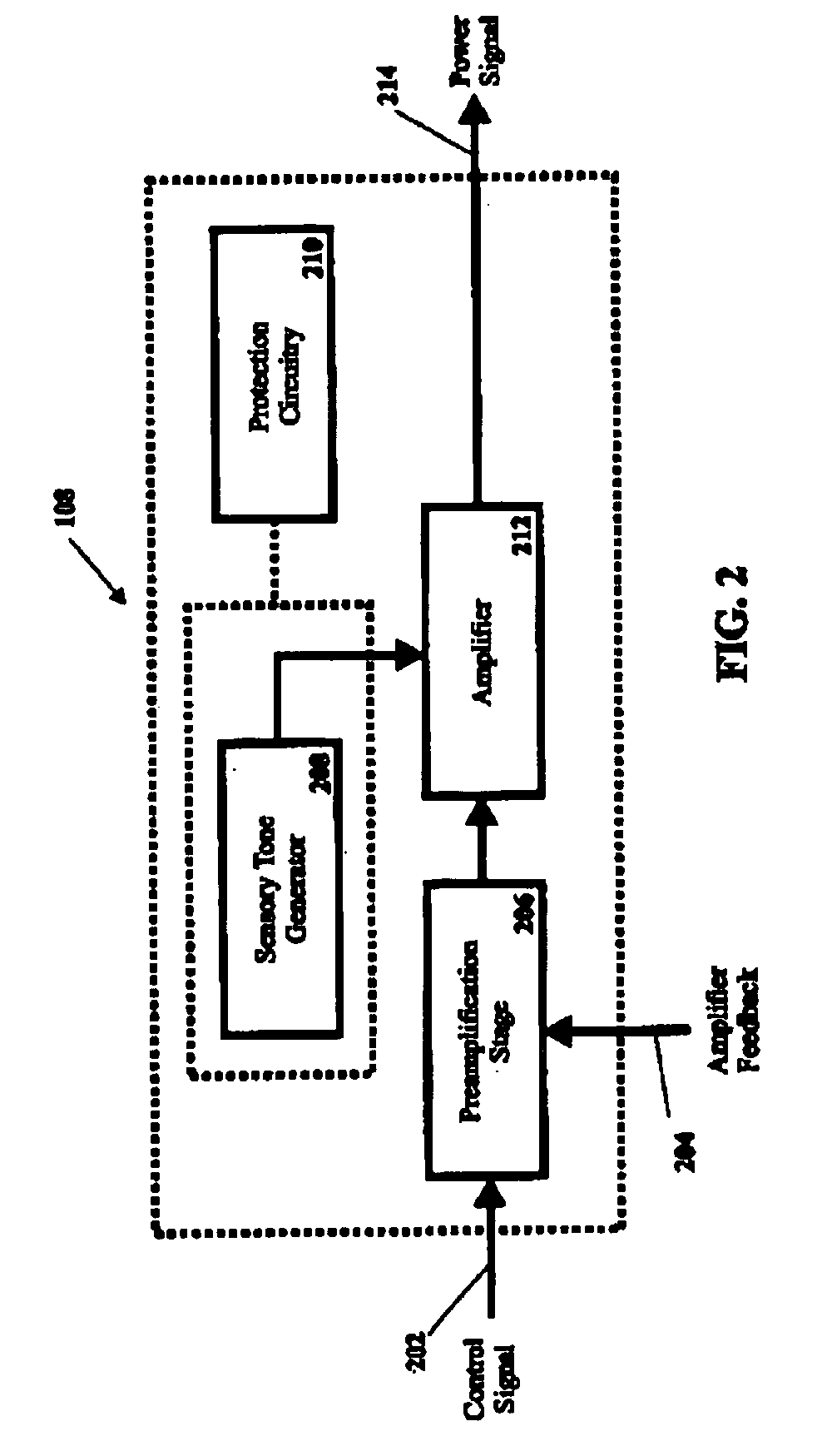Sensory feedback system for electroactive polymer based transducers
a polymer and sensory feedback technology, applied in piezoelectric/electrostrictive device details, piezoelectric/electrostrictive/magnetostrictive devices, piezoelectric/electrostrictive/magnetostrictive devices, etc., can solve the problems of cumbersome traditional approach to obtaining sensory feedback by adding sensory components, interfere with the motion of the transducer, etc., to ensure safe operation of the transducer and improve the performance of the amplifying stag
- Summary
- Abstract
- Description
- Claims
- Application Information
AI Technical Summary
Benefits of technology
Problems solved by technology
Method used
Image
Examples
Embodiment Construction
1. General Structure of the Sensory Feedback and Control System for the Electroactive Polymer Based Transducer
[0017]FIG. 1 is a block diagram for the sensory feedback and control system 100 for measuring the electrical properties of the electroactive polymer transducer and sensory circuitry 102. The user input 110 is integrated with the sensory feedback from the sensory feedback circuitry 104 within the control system 106. A control signal 202 from the control system 106 is delivered to the amplifier and sensory tone generator 108 where this signal is further combined with the internal feedback signal 204 from the sensory feedback circuitry 104 and an internally generated sensory tone within the amplifier and sensory tone generator 108 to produce the power signal 214. The power signal 214 is then delivered to the electroactive polymer transducer and sensory circuitry 102 in order to perform the task as dictated by the user input 110. During this process, the surrounding environmen...
PUM
 Login to View More
Login to View More Abstract
Description
Claims
Application Information
 Login to View More
Login to View More - R&D
- Intellectual Property
- Life Sciences
- Materials
- Tech Scout
- Unparalleled Data Quality
- Higher Quality Content
- 60% Fewer Hallucinations
Browse by: Latest US Patents, China's latest patents, Technical Efficacy Thesaurus, Application Domain, Technology Topic, Popular Technical Reports.
© 2025 PatSnap. All rights reserved.Legal|Privacy policy|Modern Slavery Act Transparency Statement|Sitemap|About US| Contact US: help@patsnap.com



